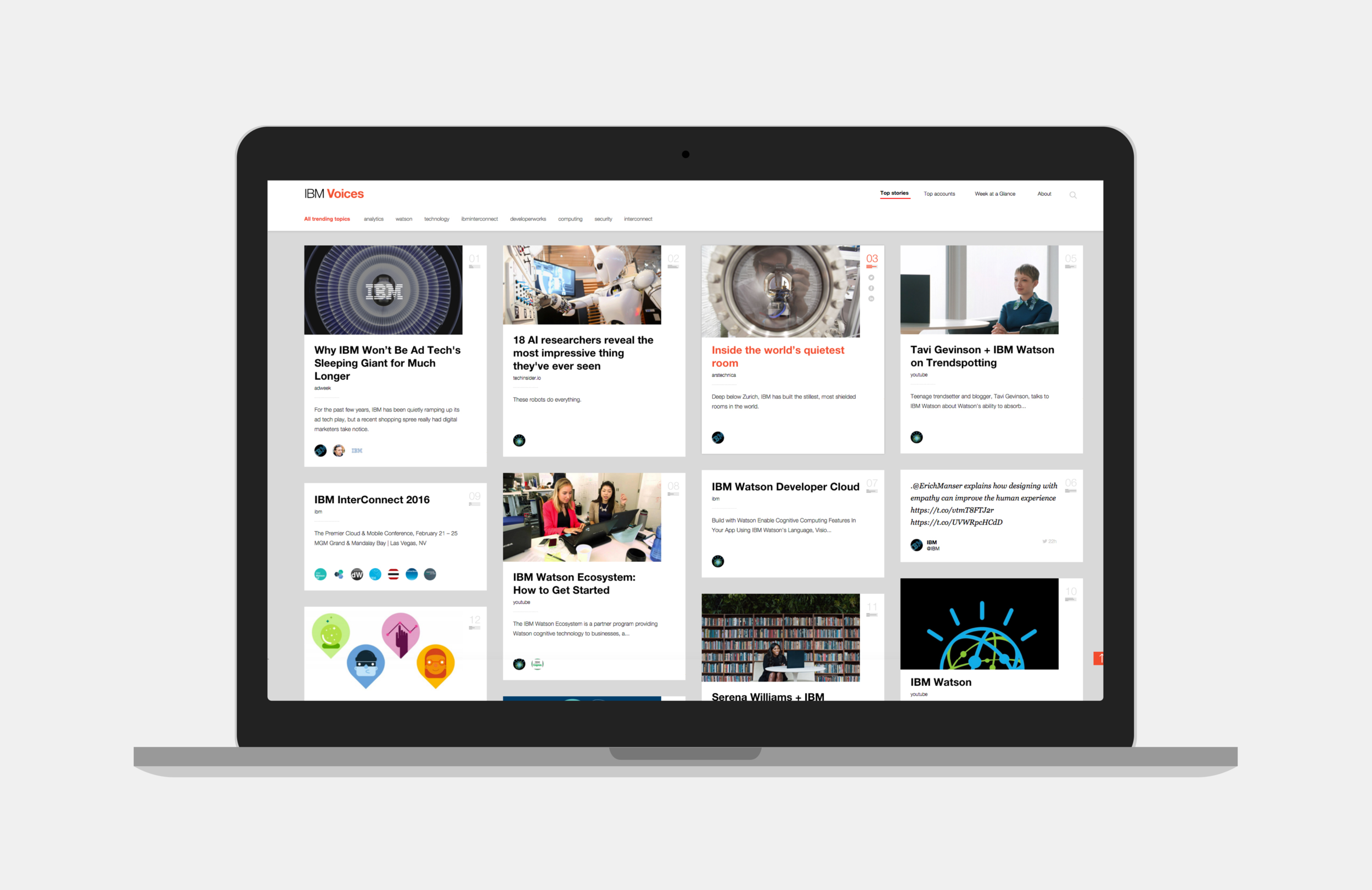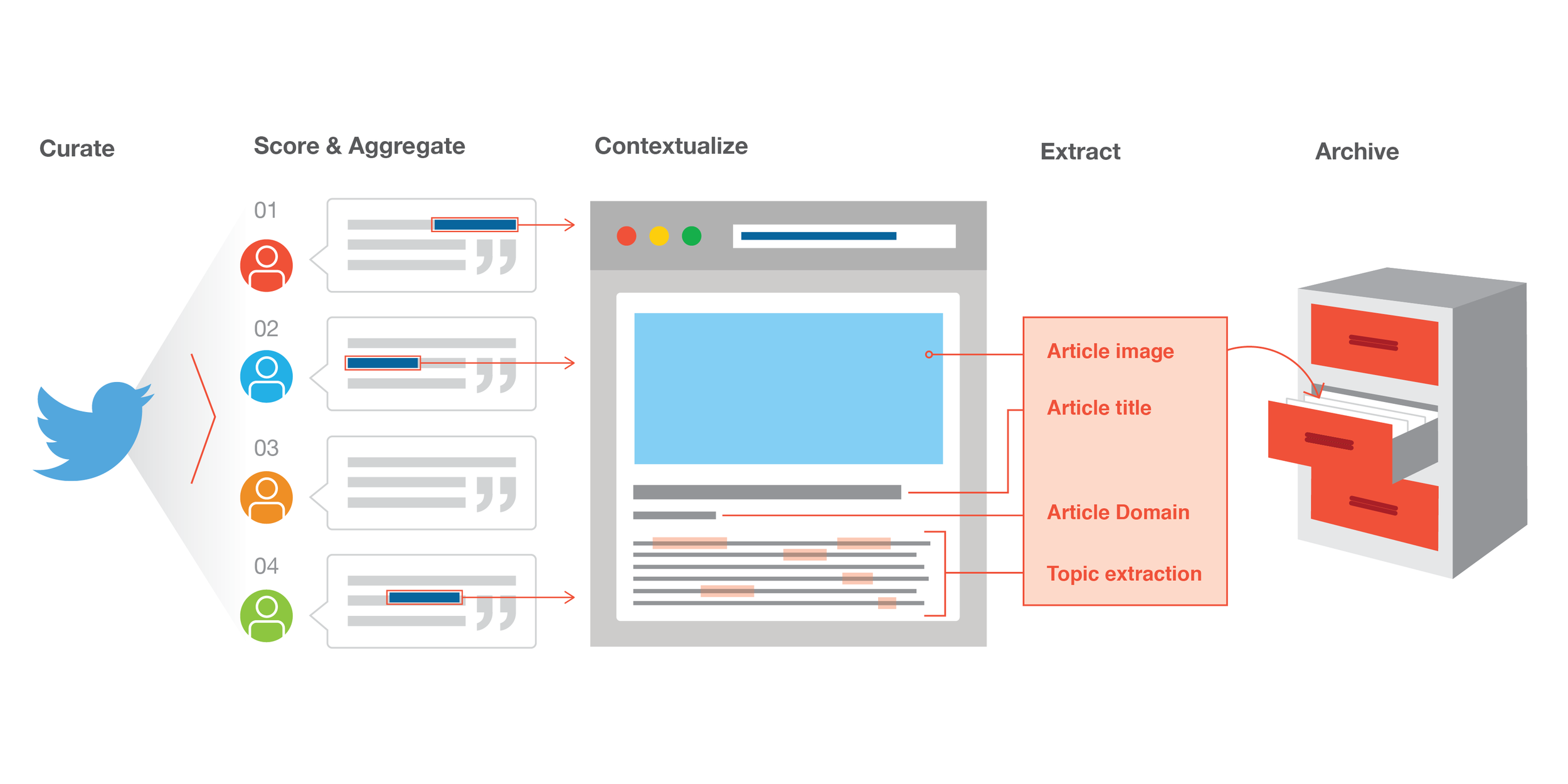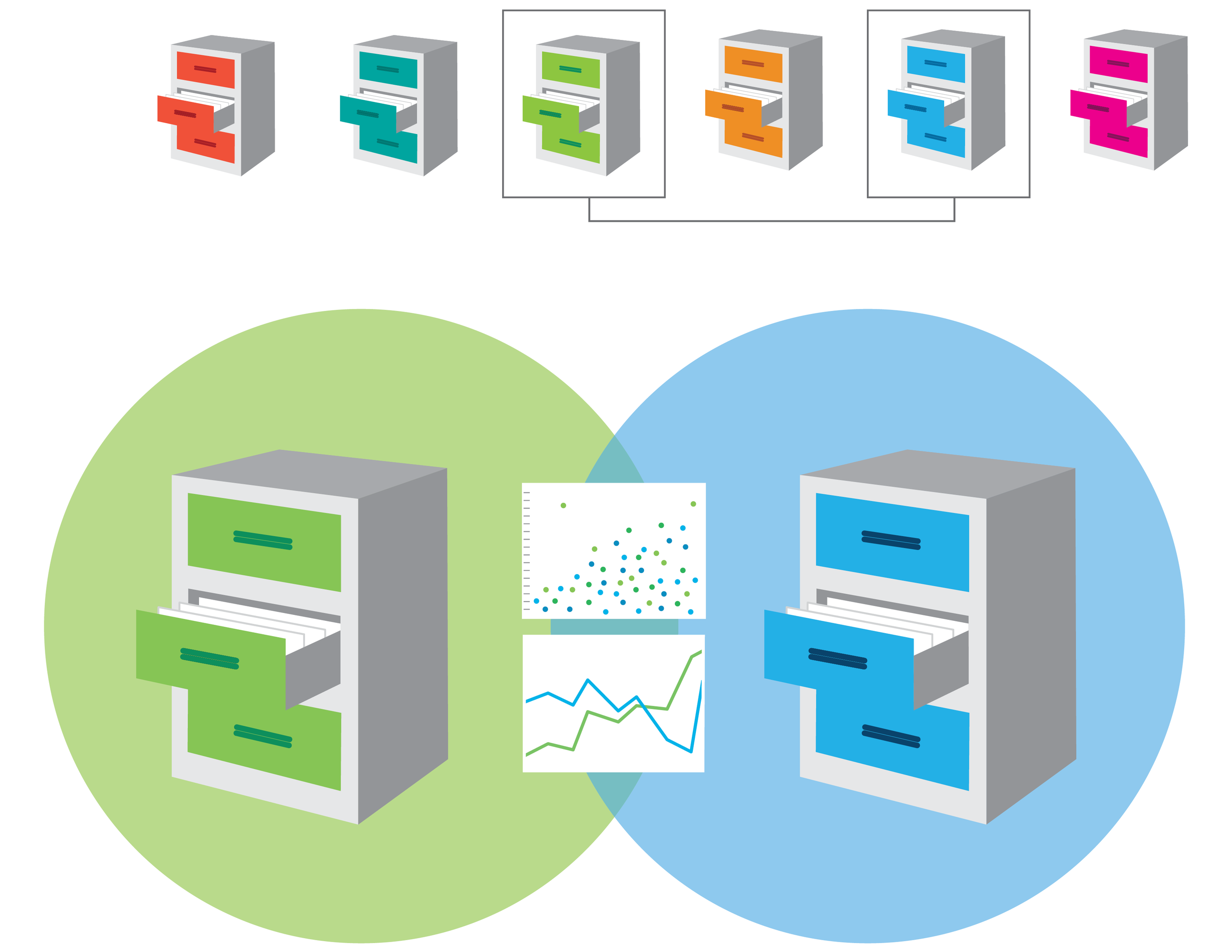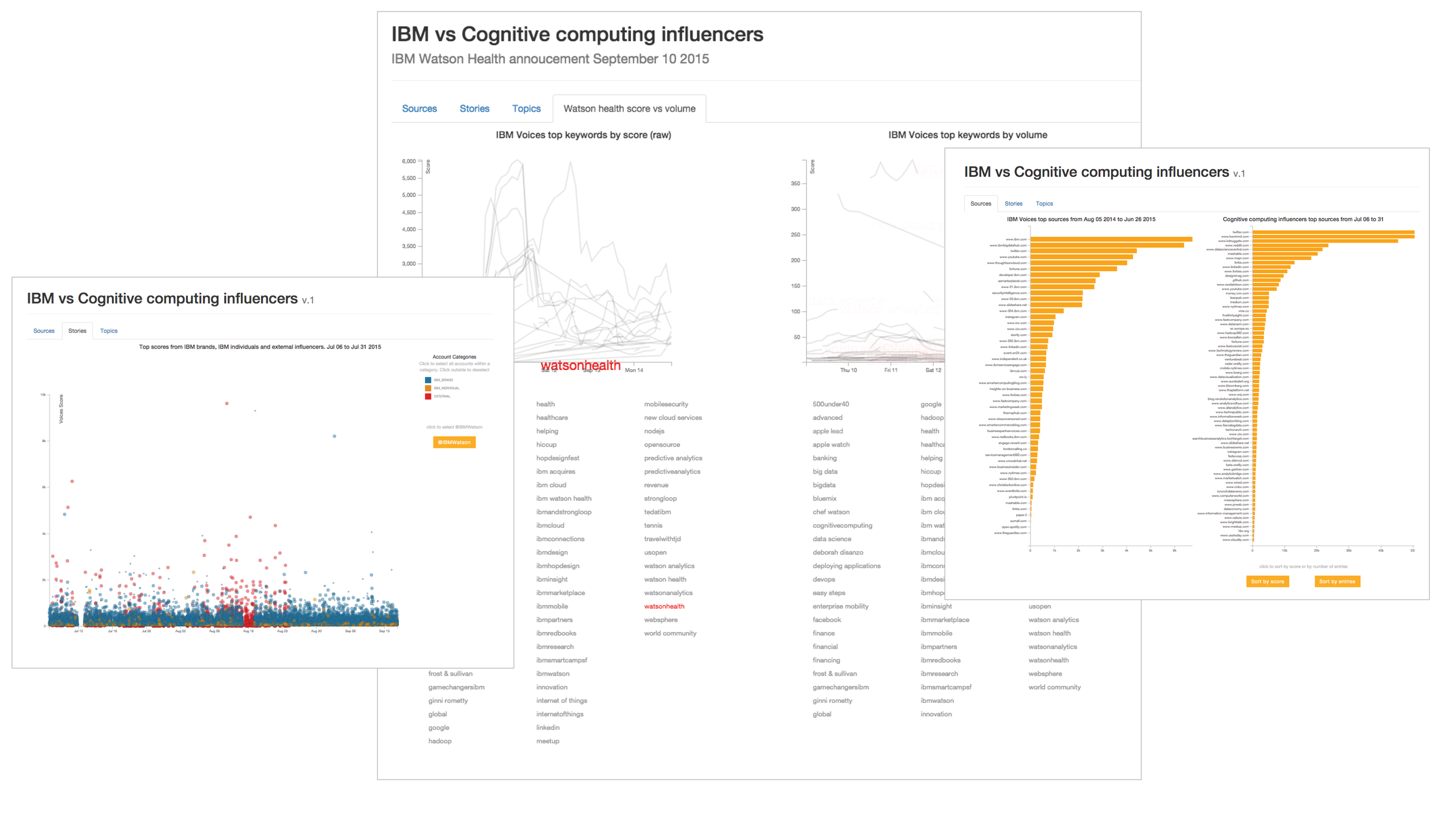IBM VOICES & DISCOVERY (2013–2016)
ROLE: DESIGN LEAD // product owner (2015)
Voices is an application that allows IBM to leverage social data to power insight and discovery to their enterprise social programs. Initially conceived as a program to unify IBM’s social efforts with common measurement, Voices changed the culture of behavior by rewarding true engagement over volume of reach. At one time, Voices had become the ‘go-to’ service that IBM marketers use to create data-driven social displays and find ‘at-a-glance’ insights into conversations and marketing efforts.
THE PROBLEM
IBM lacked a centralized means to aggregate, score, standardize and promote both socially active IBMers and social news about IBM.
The process
Conducted sessions with Social Business Managers, IBM leadership, and dev to create a system for scoring and aggregation. This was used to define the MVP. Prototypes were created to assess the value with the SBMs and leadership. We established an agile process of working sketch sessions, followed by simultaneous data prototyping and wireframes. Once we had validated with our users, we developed the feature and created a method for via API for other teams and SBMs. In accordance with the agile workflow, we presented new features and roadmap every 2 weeks to stakeholders.
“At its core, IBM is a company of experts. Both the activation of corporate character and building of advocacy at scale at IBM relies first and foremost on the IBMers themselves who must engage and share their expertise with others to drive our business. IBM’s social web service – Voices – uses data analytics to serve up our best and brightest thinking in a way that is informative and compels interaction with IBM.”
Ben Edwards, Vice President, Marketing Innovation & Platforms, IBM
How it works
Voices data comes from a hand-picked list of Twitter accounts selected based on their authority on a specific topic. The idea is that you want to listen to a target audience or demographic, instead of the whole Twitter-verse. Often the most important information in a tweet was a link that was shared. Voices retrieved the associated image, title and description from the metadata of the shared article, video or website. It also extracted the key topics from the content of the page. We worked together to refine the scoring logic and and weights. It was essential to have those scores reflect the values of IBM’s social engagement standpoint. Escaping the echo chamber and championing thought leadership were KPIs.
Week At A Glance View
The ‘Week at a Glance’ feature made it possible to view historical top trending keywords by day from the previous 7 days.
At a Glance view on tablet
Initial sketch for At a Glance view
Initial prototype design
Coded MVP prototype for testing
INFLUENCER VIEW
Influencer view on tablet
UX sketch proposal for Influencer view
Prototype design
Diagram prototype for showcasing the method for scoring accounts
ADMIN
Admin designs
API Usage
Example of an event view created for IBM Design for use at events as a live Tweet collage
Product audit for next phase
Comparison view
Influencer view
Comparative Analysis
Digital marketing professionals can carefully choose the messaging, hashtags and strategy for their campaigns by comparing their brand’s content to that of their peers, competitors and influencers. They can now have a 360-degree view of the industry–in its own words.
Browse popular articles shared by influencers
Learn when a brand is a topic of conversation
Monitor trending topics among your audience
Identify potential partnerships
Recognize hidden gems and red flags
Competitive analysis
It was important to validate the value we would be providing our users by conducting a thorough competitive analysis of the tools made available to them; both internal and external.
External competitive analysis to determine where our product would fall given its intended value proposition
Internal competitive analysis to distill the target users of each product weighed against the services they provide
Data prototyping
Validating our assumptions was key to creating a lasting product that would provide true value. We never wanted to get caught flat-footed with misaligned goals or functionality.
We tapped into our massive archive of tweets and were then able to identify the top performing domains, content, channels and conversations across all the business units.
























